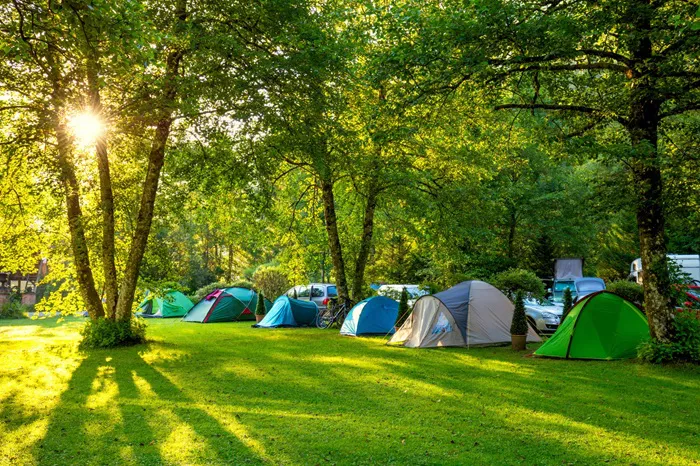There’s something truly magical about camping. It’s a chance to leave behind the noise of traffic, the constant ping of notifications, and the fluorescent glow of screens. Instead, you’re greeted by the symphony of nature—the rustling of leaves in the wind, the gentle lapping of water against the shore, and the distant calls of wild creatures. It’s a time to slow down, breathe in the fresh air, and create memories that will be etched in your mind forever. But to fully embrace this idyllic escape, choosing the right campsite is crucial. Forest River is a popular camping spot that has caught the attention of many outdoor enthusiasts. But is it a good choice? Let’s explore this in detail.
Camping is a great way to connect with nature. Choosing the right campsite is important. Forest River is a popular camping spot. But is it a good choice? Let’s explore this in detail.
1. Location and Accessibility
Where Is Forest River?
Forest River is usually located near wooded areas with a flowing river. Exact locations may vary, but many campsites with this name are found in national parks or forest reserves.
How Easy Is It to Reach?
- By Car: Most Forest River campsites have good road access.
- By Public Transport: Some may require a short hike from the nearest bus stop.
- Parking Availability: Many sites offer parking, but some remote spots may not.
If you prefer easy access, check the specific Forest River campsite details before going.
2. Natural Features
The Forest
A dense forest means shade and cooler temperatures. This is great in summer but may feel damp in colder months.
The River
- Water Source: Useful for cooking and cleaning (must be purified).
- Fishing Opportunities: Some rivers allow fishing—check local rules.
- Wildlife Sightings: Rivers attract animals, which can be exciting but requires caution.
Terrain
- Flat areas are best for tents.
- Rocky or uneven ground may make camping harder.
3. Campsite Facilities
Basic Amenities
Some Forest River campsites offer:
- Fire pits
- Picnic tables
- Toilets (sometimes just pit toilets)
Others may be more primitive. Always check before packing.
Safety Measures
- Wildlife Protection: Bear-proof storage may be needed in some areas.
- Emergency Access: How close is the nearest help if needed?
4. Weather and Best Time to Visit
Seasonal Changes
- Spring: Pleasant but can be rainy.
- Summer: Warm, great for swimming, but bugs may be an issue.
- Fall: Cool and colorful, fewer crowds.
- Winter: Very cold, only for experienced campers.
Checking Weather Forecasts
Always check the weather before camping near a river. Flash floods can be dangerous.
5. Activities Available
Hiking
Forests often have great trails.
Water Activities
- Swimming (if the river is safe)
- Kayaking or canoeing (if the water flow allows)
Wildlife Watching
Birds, deer, and sometimes bears can be seen. Keep a safe distance.
6. Potential Challenges
Insects
Mosquitoes and ticks can be a problem in wooded areas near water. Bring repellent.
Noise Levels
Some sites may be near roads or other campers. Research if you prefer quiet spots.
Crowds
Popular Forest River campsites may get busy in peak season.
7. Comparing Forest River to Other Campsites
Pros
- Beautiful scenery
- Water access
- Good for multiple activities
Cons
- Possible bugs and wildlife risks
- Weather-dependent conditions
8. Tips for Camping at Forest River
Packing List Essentials
- Tent with a rainfly
- Water filter or purification tablets
- Bug spray
- Warm clothing (nights can get cold)
Leave No Trace
Always clean up to protect nature.
Conclusion
Forest River can be a great campsite if you prepare well. It offers beautiful views and fun activities. However, it may not suit everyone due to possible bugs, wildlife, and weather changes. Research your specific location and plan accordingly.
Happy camping!
Would you like me to extend any section further?
Related topics:
Daniel Boone National Forest Considers Implementing Trail Use Fees and Camping Price Hikes
What is the Best Fifth Wheel Bunkhouse?
What Is the Best Pull-Behind Camper?

